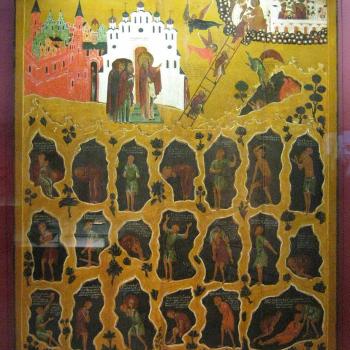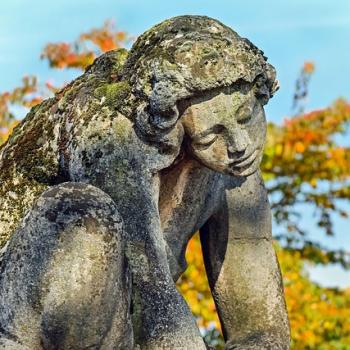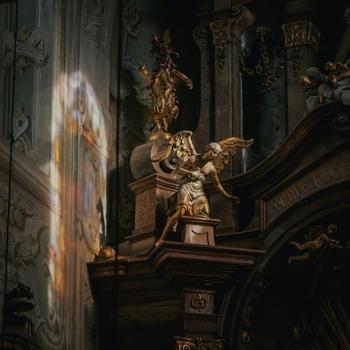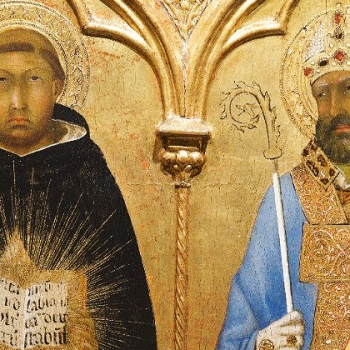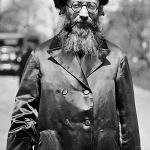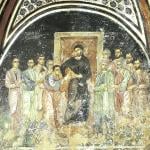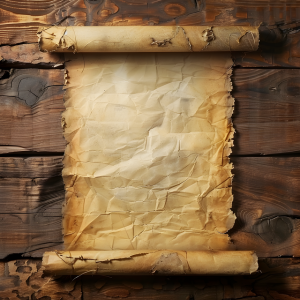
In the Judean Desert, not far from the Dead Sea, there is a series of caverns known as the Qumran Caves. Except for the occasional visit by Bedouin nomads, these caves held little interest to the outside world. That would all change in the middle of the twentieth century.
Between 1947 and 1956, thousands of writing fragments were discovered in these caves. These “manuscripts” would become known as the Dead Sea Scrolls. In this paper, I want to examine the significance of these Scrolls, particularly as they relate to Catholicism.
Before beginning, I want to provide information about the sources cited. In the article, I refer to “Scroll numbers.” The numbers and the links in the text have been provided by the Israel Antiquities Authority.
What Are The Dead Sea Scrolls?
The Scrolls themselves are written on leather, papyrus, and copper and are written predominantly in Hebrew, with some in Aramaic and others in Greek.
The dating of ancient texts is far from an exact science, and this is also true of the Dead Sea Scrolls. Nevertheless, scholars have determined they were likely written between the third century B.C. and the second century A.D.
It is believed that the authors of the Scrolls were a Jewish sect known as the Essenes. The Essenes were one of four distinct Jewish groups living in Judaea before and during the Roman era (approximately 6 A.D. to 135 A.D.).
Archaeological evidence from Qumran, including the remains of Jewish ritual baths, appears to support this hypothesis. Nevertheless, some scholars have also suggested that other groups, such as early Christians and Jews from Jerusalem fleeing the Romans, may have contributed to the production of the scrolls found at Qumran.
Remarkably, the Scrolls include fragments composed of much of the Old Testament. Additionally, they provide insight into theological conflicts within Judaism as well as references to the burgeoning Christian religion.
Theological And Religious Significance
The Scrolls supply a wealth of data that influences theology and the Catholic faith. This data includes previously unavailable Hebrew Bible manuscripts, allowing scholars to compare and refine existing texts. Such information sheds light on the accuracy of biblical transmission and variations in ancient texts.
They have also provided insights into the relationship between the Masoretic Text (the standard Hebrew version of the Bible) and the Septuagint (the Greek translation). This information is of great interest to Catholicism as the Catholic Church utilizes the Septuagint and the Vulgate (the Latin translation of the Bible). The Dead Sea Scrolls help show the validity of those versions of the Bible.
The Scrolls also illuminate the cultural and religious milieu in which the Gospels were written, providing unique insights into Jewish life and religious beliefs before and during Jesus’s time. This helps contextualize the New Testament and the origins of Christianity.
Concepts and language within the Scrolls mirror those found within the biblical text, including the New Testament. The Scrolls include ideas, language, and concepts of messianism, eschatology (the study of the end times), and community life. Owing to this, some scholars have suggested a relationship between the Qumran community (associated with the Scrolls) and early Christianity. This is significant in that it confirms that the Gospels were written within the time period in which they claim to be written.
Finally, the Dead Sea Scrolls provide data about the development of the biblical canon, particularly the Old Testament. They provide evidence of the diversity of texts that were considered important in ancient Judaism. From a Catholic perspective, this is useful in understanding the history of the deuterocanonical books.
Insight Into The World Of Jesus
The Scrolls provide valuable data regarding what people thought of Christ as well as clarifying Christ’s own words. For example, one Scroll refers to the coming of the “Son of God,” a “Son of the Most High” who will be “great” and reign forever. (See Scroll Number 4Q246). The language echoes the Annunciation narrative found in Luke.
Another scroll speaks of the appearance of one who acts in the manner of God, having the power to forgive sins and defeat Satan. (Scroll Number 11Q13).
Significantly, the Scrolls can provide unique insights into some difficult New Testament verses. For example, one Scroll shows that Jesus did, in fact, proclaim himself as the Messiah. This provides additional evidence countering those who claim Jesus never claimed to be the Messiah.
An example of this is seen in Matthew’s Gospel. In the text, Jesus responds to the imprisoned John the Baptist’s question of whether He was the Messiah. For many, Jesus’s response is not seen as confirming His Messiahship. “Go and tell John what you hear and see: the blind regain their sight, the lame walk, lepers are cleansed, the deaf hear, the dead are raised, and the poor have the good news proclaimed to them. And blessed is the one who takes no offense at me.” (Matthew 11:4-6).
Jesus’s response to John the Baptist refers to the prophet Isaiah (See Isaiah 35:5-6 and 61:1-3). This is not lost on the authors of the Scrolls. “For the heavens and the earth will listen to his Messiah…For he will honor the devout upon the throne of eternal royalty, freeing prisoners, giving sight to the blind, straightening out the twisted…and the Lord will perform marvelous acts…for he will heal the badly wounded and will make the dead live, he will proclaim good news to the meek, give lavishly to the needy, lead the exiled, and enrich the hungry.” (Scroll Number 4Q521).
Conclusion
The Dead Sea Scrolls are undoubtedly one of the most significant finds in archeological history. They are also of significant importance to theologians and biblical scholars.
The Dead Sea Scrolls have deepened our understanding of the historical, religious, and textual backgrounds of Judaism and Christianity. Additionally, they provide valuable context for interpreting the Bible and the origins of the Catholic faith.







